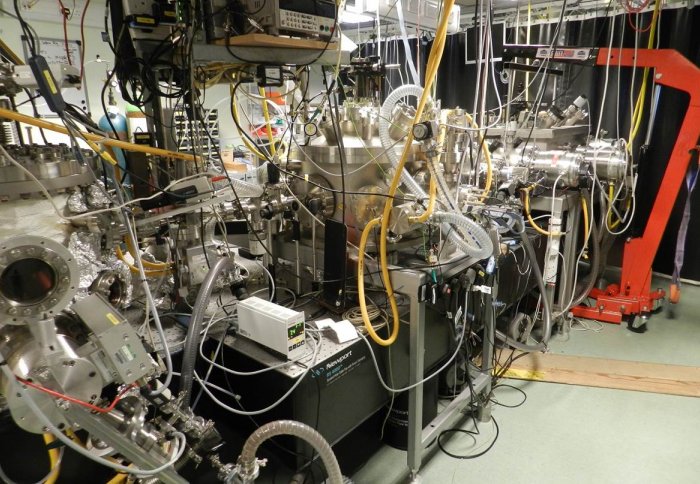18 May 2015
Reactions caused by light, such as photosynthesis, can now be captured in greater detail thanks to a technique developed by Imperial researchers.
Using extremely short-lived pulses of light allows researchers to capture the quickest movements of electrons and understand precisely what happens during a reaction between light and molecules. Researchers can now explore important stages of these reactions thanks to a new technique developed at Imperial College London.
The technique uses two pulses of light that last for only a few hundred attoseconds (one attosecond equals a billionth of a billionth of a second). The first pulse causes a reaction in a molecule, and the second pulse measures how the molecule has changed as a result a few femtoseconds later (one femtosecond equals one millionth of a billionth of a second).
The time delay between the two pulses can be accurately controlled, allowing researchers to explore multiple fleeting stages of the reaction. By repeating the experiment numerous times with different delays, researchers can build up a ‘movie’ frame by frame of the way a molecule changes in response to the first light pulse.
This so-called ‘pump-probe’ technique, referring to the roles of the two light pulses, had been used before at different light frequencies, but the team managed to create pulses with potentially more useful frequencies.
The ‘pump’ and the ‘probe’ pulses have different frequencies, making them different colours. The new technique uses an ultraviolet pulse for the first time – a frequency of light that interacts strongly with molecules. This is particularly true of biological molecules, or biomolecules, which interact with UV radiation from the Sun.
Work on the technique, published today in Nature Photonics, was carried out by scientists from the Department of Physics at Imperial and Leibniz Universität Hannover in Germany.
Controlling chemical reactions
Co-author, Professor Jon Marangos from the Department of Physics at Imperial said: “We are excited that with this capability we can now further our research into what happens during the first few femtoseconds following excitation by light, a topic that has so far remained unexplored by experiments. An early target of this two-colour pump probe capability will be the study of the first step in the radiation damage of biomolecules.”
Research on attosecond timescales has accelerated in recent years. While advances like this allow researchers to probe new phases of light-induced reactions, they also bring them closer to controlling chemical reactions with unprecedented accuracy.
Co-author Professor John Tisch from the Department of Physics at Imperial said: “This has been a real team effort, involving hardworking and dedicated PhD students and post-docs as well as overseas collaborators who carried out theoretical simulations. We’re all happy and excited to have developed a world-leading attosecond capability here at Imperial College.
“We’re actually using these pulses in the lab right now for a new experiment. This is the way this field tends to go – you improve your measurement tools and then you rush to use them to measure something no one else has been able to before.”












